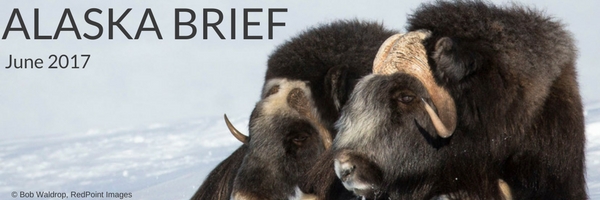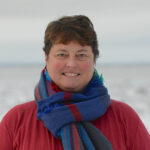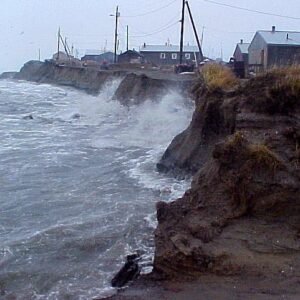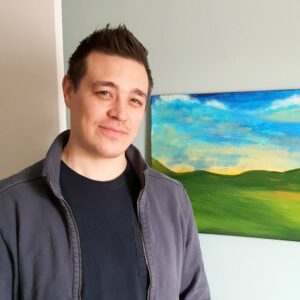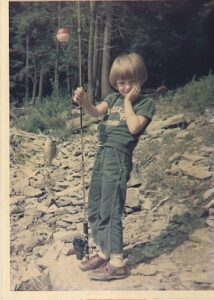Alaska Brief Newsletter–June 2017
Dear Supporter:
Do you remember that movie “Independence Day”? It told the story of people coming together to fend off a destructive alien force. They unified. They innovated. They did things that were uncomfortable. They even saved the world.
Amazing to think that a 1996 action film can tell us what to do in 2017. Today we need to unify, innovate, and do things that feel uncomfortable. We need to save the world. This time the alien force didn’t show up in spaceships; it hovers over us as a changing climate that already puts Alaska’s coastal communities in harm’s way.
Science backs Paris Agreement
Too many of our leaders live in denial about this threat. Our own President shoved his head in the sand by withdrawing our country from the Paris Agreement.
Signed by 195 countries in 2015, the agreement unified virtually all nations on earth in reducing carbon emissions and helping communities survive the impacts of rising seas, erosion, extreme storms, acidifying oceans, and much more.
Science shows that humans have pumped a dangerous amount of carbon into the atmosphere since the industrial revolution. This isn’t to blame anyone, it’s just a fact. The Paris Agreement recognizes and addresses that truth.
Denying climate change harms Alaskans
The results of a warming climate hit close to home in Alaska. The Arctic is warming at more than twice the rate of the rest of the United States, threatening Alaska villages. The warmer it gets, the more natural sources of methane, like melting permafrost, continue to speed up that process.
Already, Alaska villages have to ask the hard questions that other cities will soon face. How and where do you move an entire community? How do you preserve its social and cultural well-being? How do you pay for it? What if you can’t?
Way south, the accelerating melting of Antarctica’s ice sheets has made scientists fear an unstoppable disintegration that could mean the collapse of world cities like Miami and New York. How does a country handle the needs of entire cities with millions of people who need to uproot and find new homes? What of those people outside a nation’s borders? What is the cost of ignoring the needs of refugees? What happens when you become one?
Denial is not leadership
Denying climate change means functionally rejecting the knowledge of 97 percent of climate scientists who agree that human activities over the last century have contributed to, and accelerated, the climate’s warming. It also results in a refusal to do anything to protect people from harm.
The Paris Agreement was a call to action and gave each country flexibility and self-determination in how it achieves its goal to reduce carbon emissions. We can only work to fix this together. Near unanimity in the world is virtually unheard of, so it is heartening to know that almost all countries understand the crisis we face.
Yet now, the country that should be the world leader has abdicated its role and responsibility. When the President called the Paris Agreement–one that employs self-identified contributions that can be changed–unfair to the United States, he sounded like a kid who drank two-thirds of the jug of chocolate milk and then complained that he didn’t get a full ration when they divvied out the rest to the other kids.
The health of Alaska depends on all of us
At Trustees, we choose to act on climate change. We used the law to help stop coal mining at Chuitna and Wishbone Hill, because keeping coal in the ground both protects clean water and air, and reduces carbon emissions over the long-term.
We also fight to curtail fossil fuel development in the Arctic in order to reduce its contribution to climate change and the threat of development to the people, wildlife and iconic areas that suffer from accelerated warming.
We believe it’s time to unify. To innovate. To do things that may be uncomfortable. The health of our communities depends on it.
Vicki Clark
Executive Director
PS: Your support of Trustees for Alaska is critical now more than ever.
DONATE
Arctic communities in peril
Rising seas, erosion and severe storms already hurt coastal Alaskans, but the impacts reach far beyond U.S. borders?
Self-taught artist paints rural Alaska life
Self-taught artist Ryder Erickson makes paintings from his home in Unalakleet, Alaska. Find out why preserving culture and places is an essential part of Ryder’s work–and how you can get a sticker of one of his paintings, “Shaktoolik Gold.”
How do you make a clean city?
What happened to the kid who asked her parents, “What are they making, pollution?” The girl from Pittsburgh headed north to fight for clean water and air–for everyone.



